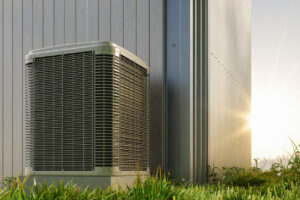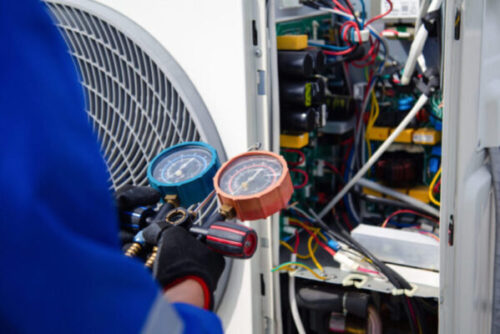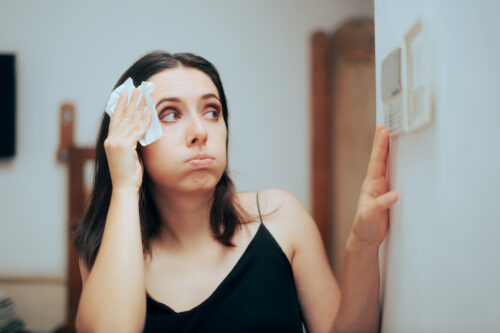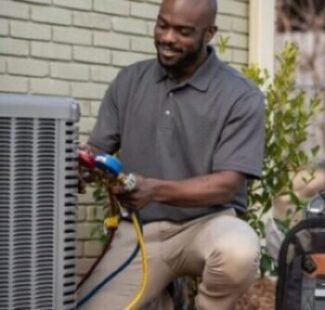10 Most Common AC Problems to Look Out For
Picture this: It’s 100 degrees outside and you’ve just spent the entire afternoon sitting in traffic. You’re hot, sweaty, and in need of only one thing: a nice, chilly, air-conditioned home. Unfortunately, the second you walk in the door, you realize something’s wrong: Your AC is out!
There are tons of common AC problems to look out for; Knowing what they are and how to prevent them could help prevent expensive repairs and/or replacements and ensure you don’t find yourself without working air conditioning in the middle of a heatwave. Check out 10 of the most common AC problems to look out for so you can stay calm and comfortably cool this summer.

1: Lack of Cool Air
One of the most common AC problems is a lack of cool air coming from the vents. This issue can be from a malfunctioning compressor, low refrigerant levels, a blocked or dirty air filter and other causes. If the compressor is not functioning correctly, it will be unable to circulate the refrigerant effectively, resulting in inadequate cooling.
Similarly, low-refrigerant levels can prevent the system from absorbing and dissipating heat properly, leading to reduced cooling capacity. If all that sounds a little too technical, don’t worry.. it is. Here’s the long and the short of it: Regularly checking and replacing your air filters can help prevent this issue. Dirty filters can restrict airflow and reduce the system's efficiency. If you’re unsure how to determine if your air filters are clean enough, it’s easy to have a professional AC repair service come check it out.
2: Frequent Cycling

When your AC system turns on and off more often than usual, it can be caused by various factors, like an oversized system, a malfunctioning thermostat, or refrigerant leaks. Oversized air conditioning equipment can cool the space too quickly, causing the system to cycle on and off too frequently.
A malfunctioning thermostat can also cause the system to cycle frequently by sending inaccurate temperature readings. On the flip side, refrigerant leaks can lead to shorter cycles.If you suspect any of the above happening, it’s probably a good idea to have a professional HVAC tech diagnose the problems.
3: Insufficient Airflow
Insufficient airflow is another common AC problem and is usually the result of clogged air filters, blocked vents, or issues with the blower motor. Clogged air filters limit the flow of air through the system, which reduces its ability to cool the space properly.
Blocked vents can also minimize airflow, causing some areas of your home to be cooler than others. And worn-out belts or bearings in the blower motor, can reduce the system's ability to circulate air efficiently. (This is only something you’d learn about if you have a routine professional inspections of your system, which we recommend.) Regular AC maintenance, including cleaning or replacing air filters and inspecting the blower motor, can help prevent this problem.
4: Unusual Noises
Unusual noises coming from your air conditioning system can be a sign of underlying issues. Sure, occasionally an air conditioner will make noise. However, ongoing grinding, squealing, or banging, is a sign that it’s time to have a professional inspect the system.
5: Water Leaks
Water leaking around your air conditioning unit is a telltale sign there’s an issue. Water leaks can result from a clogged or blocked drain line, a malfunctioning condensate pump, or low refrigerant levels. A blocked condensate drain line can cause water to back up and overflow, leading to leakage.
A malfunctioning condensate pump probably won’t be able to remove the accumulated water, which means the water will build up and eventually seep out. Low refrigerant levels can cause the evaporator coil to freeze, and as it thaws, the excess water can leak. None of these common AC problems are things you want happening in your home because they mean the AC isn’t working properly and ignoring them can lead to bigger issues like water damage.
6: Electrical Issues
Faulty wiring, blown fuses, tripped circuit breakers and other electrical issues can prevent the AC system from operating correctly.
These issues maybe from wear and tear, improper installation, or external factors such. A power outage in your neighborhood following a major storm, could cause an electrical issue. At the first sign of any electrical inconsistencies in your home (i.e., the lights go out during a thunderstorm), check all home comfort units, including your air conditioner. The last thing you want is to be left without one when you really need it!
7: Thermostat Problems

If you’ve ever been at home and found yourself thinking, “I know it’s set to 72 degrees, but it feels like 85,” you may have an issue with your thermostat. Inaccurate temperature readings, improper calibration, or a malfunctioning thermostat all point to thermostat problems.
Improper calibration will prevent the thermostat from staying at the desired temperature, and you’ll feel it. You’re just watching TV and the next thing you know you’re a sweaty mess. A malfunctioning thermostat won’t communicate with the system properly, which means it may read cooler than he actual temperature. Your best bet is to have a professional AC repair service come check it out.
8: Refrigerant Leaks
A refrigerant leak can affect the AC system's cooling capacity and efficiency. Low refrigerant levels can prevent the system from absorbing and dispersing heat effectively, which consequently leads to inadequate cooling. Signs of refrigerant leaks include ice buildup on the evaporator coils, hissing or bubbling noises, and reduced cooling performance.
9: Frozen Evaporator Coils
Simply put, the job of an evaporator coil is to remove heat from the indoor air. Frozen evaporator coils can’t do this properly because they can’t absorb heat effectively, reducing the system's cooling capacity. Coils could freeze from, low refrigerant levels if there is not enough refrigerant circulating through the system to absorb the heat.
If the warm air needed to prevent freezing doesn’t circulate through the system, the evaporator coils won’t be able to do their job. A malfunctioning blower motor can reduce airflow, leading to frozen coils. The best way to get ahead of this is with regular AC maintenance.
10: Dirty Condenser Coils

The last common AC problem we’ll address is dirty condenser coils. The condenser coils are responsible for releasing the heat absorbed by the refrigerant to the outside air. Over time, dirt and debris can accumulate on the coils, reducing their ability to dissipate heat effectively. This is normal but it needs to be taken care of ASAP if you want a working AC System.
Dirty condenser coils can cause the system to work harder, increasing energy consumption and reducing cooling capacity. Regularly cleaning the condenser coils can help maintain the system's efficiency and help ensure your home's comfort.
Understanding the most common AC problems can help homeowners like you identify and tackle issues early. This will help avoid costly repairs and keep the AC in your home running nice and cool. And it’s time to replace your AC system, there’s only one team to call. NJR Home Services makes air conditioning installation simple and easy. Our newer, energy-efficient models can help lower your monthly energy bills and reduce the frequency of expensive repairs. Request a quote for reliable, top-rated cooling solutions that ensure your home's comfort and efficiency for years to come.
Get helpful tips and updates by signing up for our Home Comfort e-newsletter.
For email marketing you can trust. *By providing your email address, you will be signed up to receive newsletters and special promotional emails. You have the right to unsubscribe at any time.